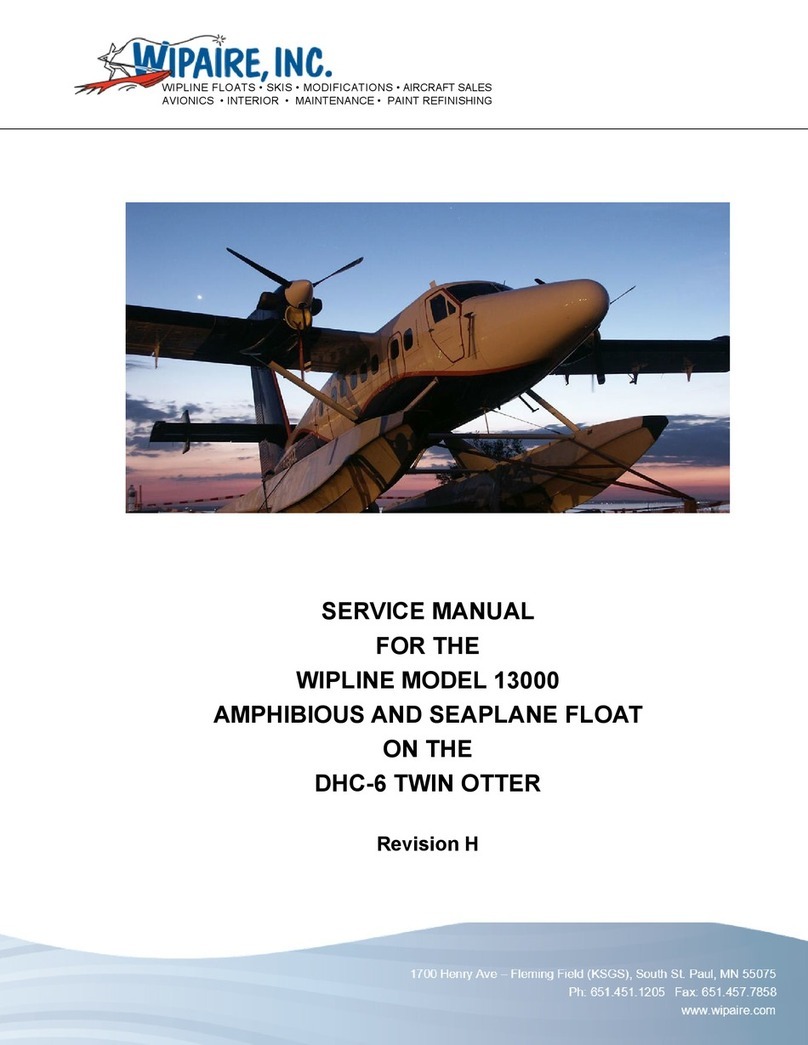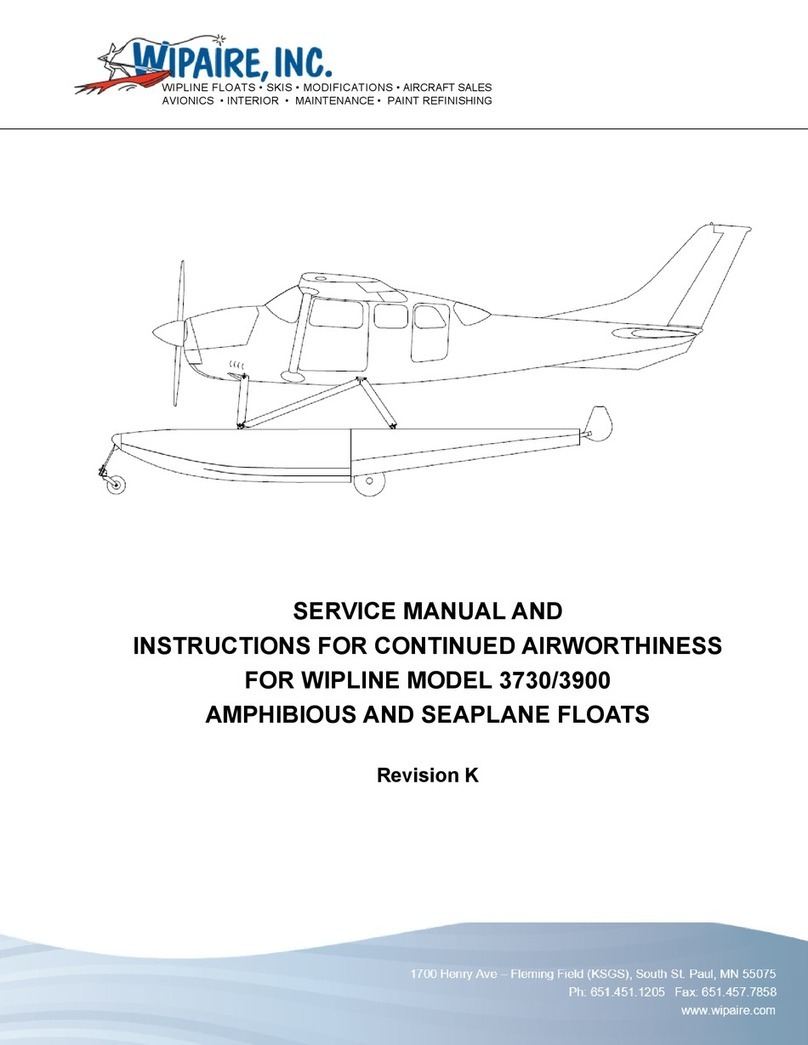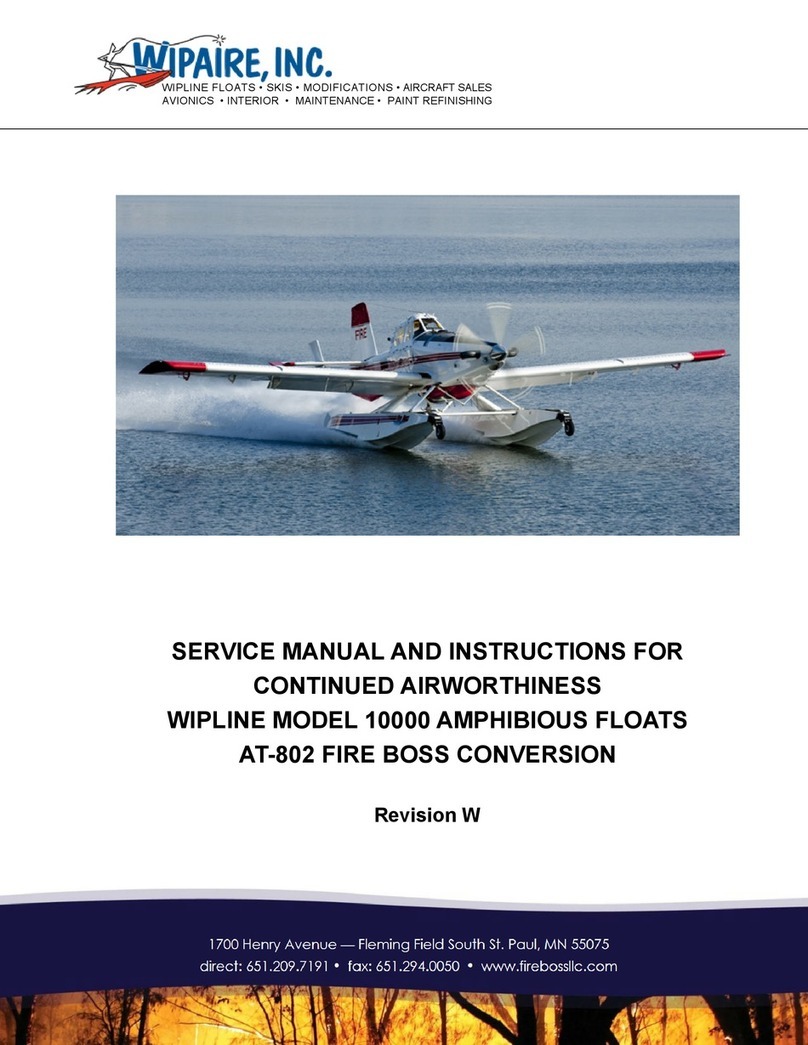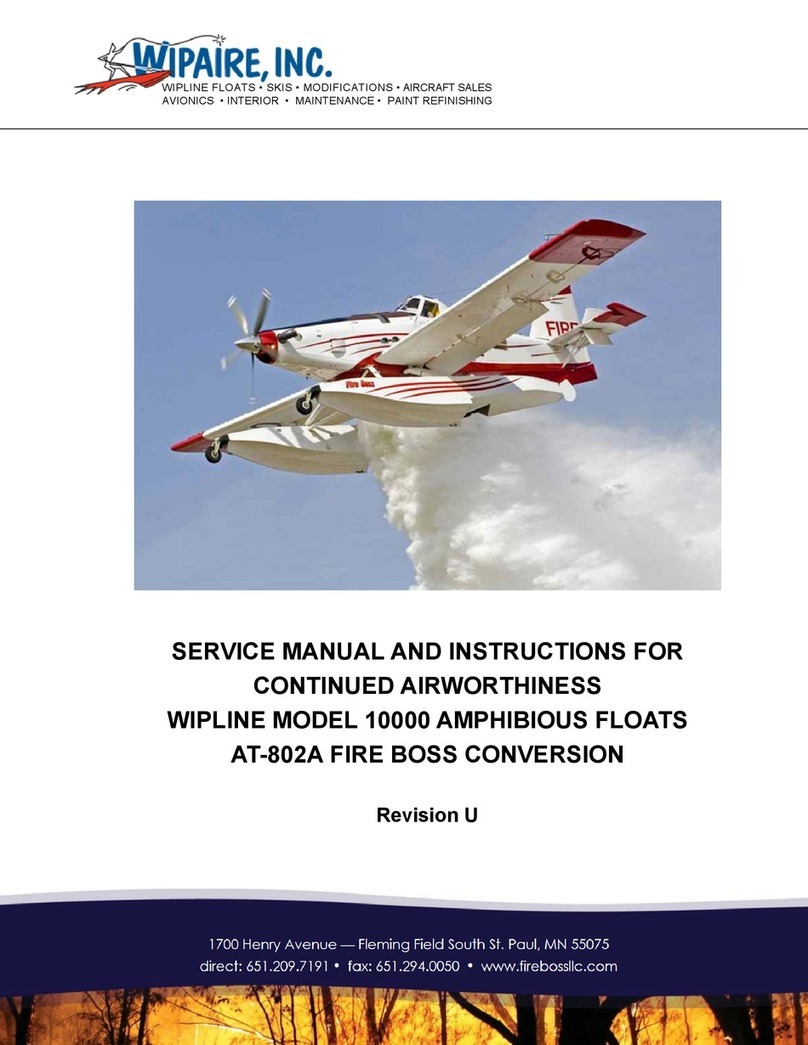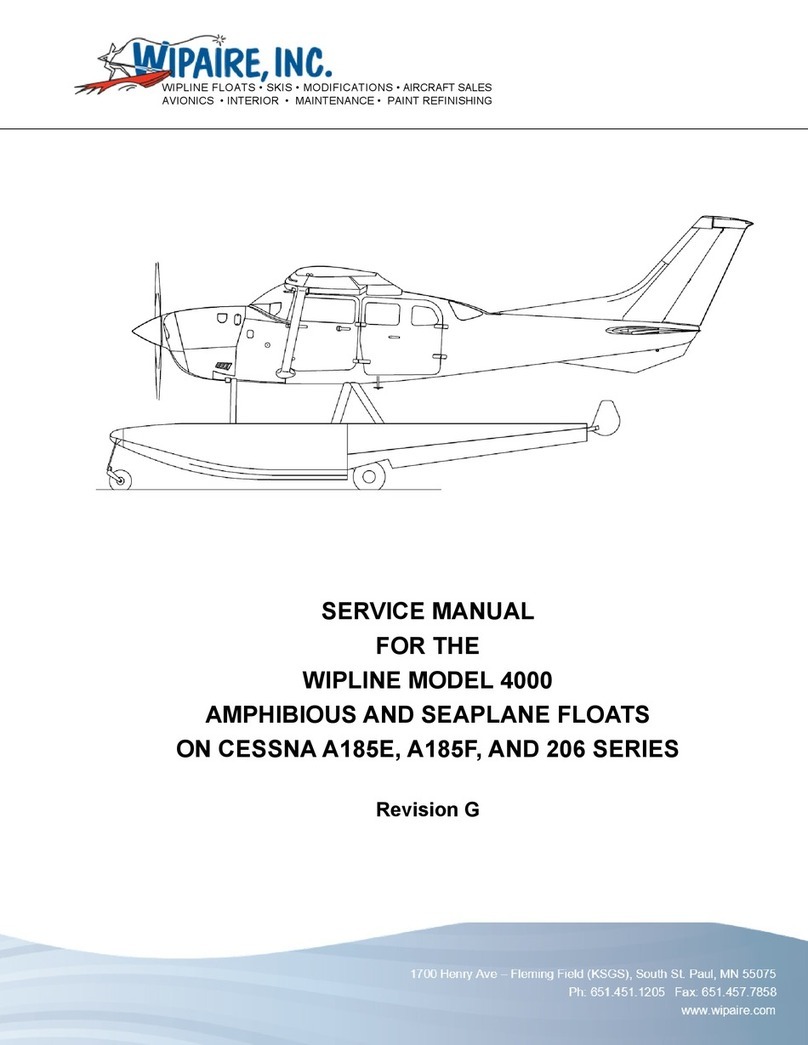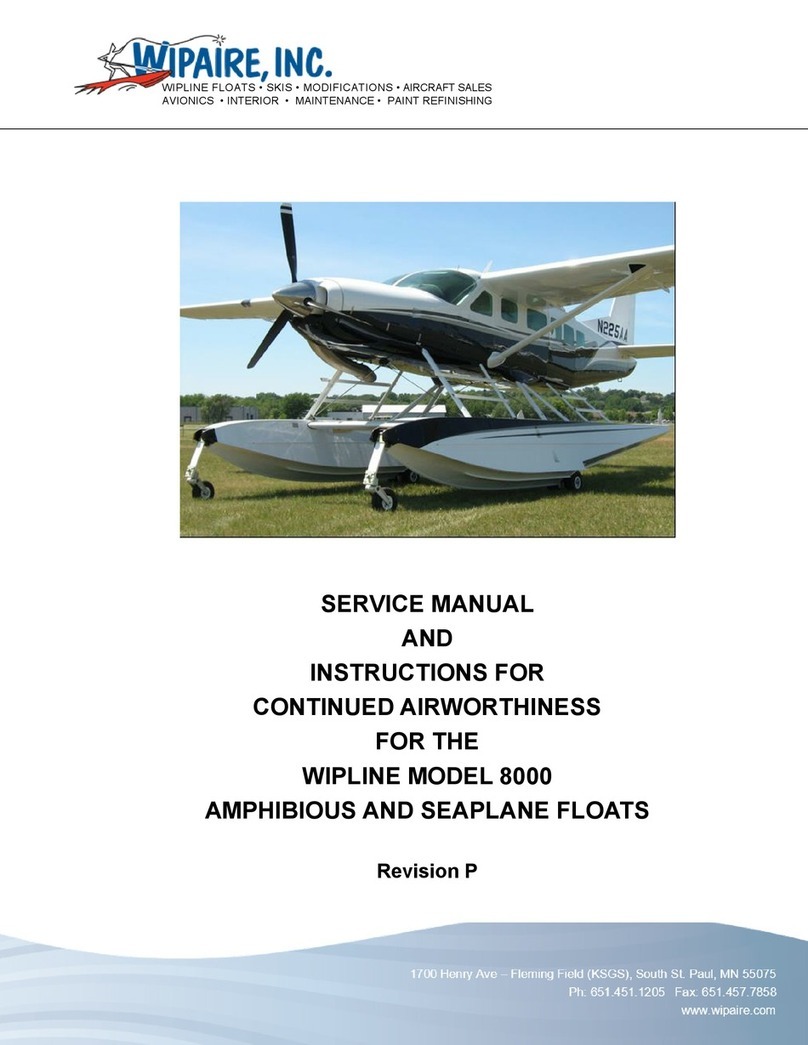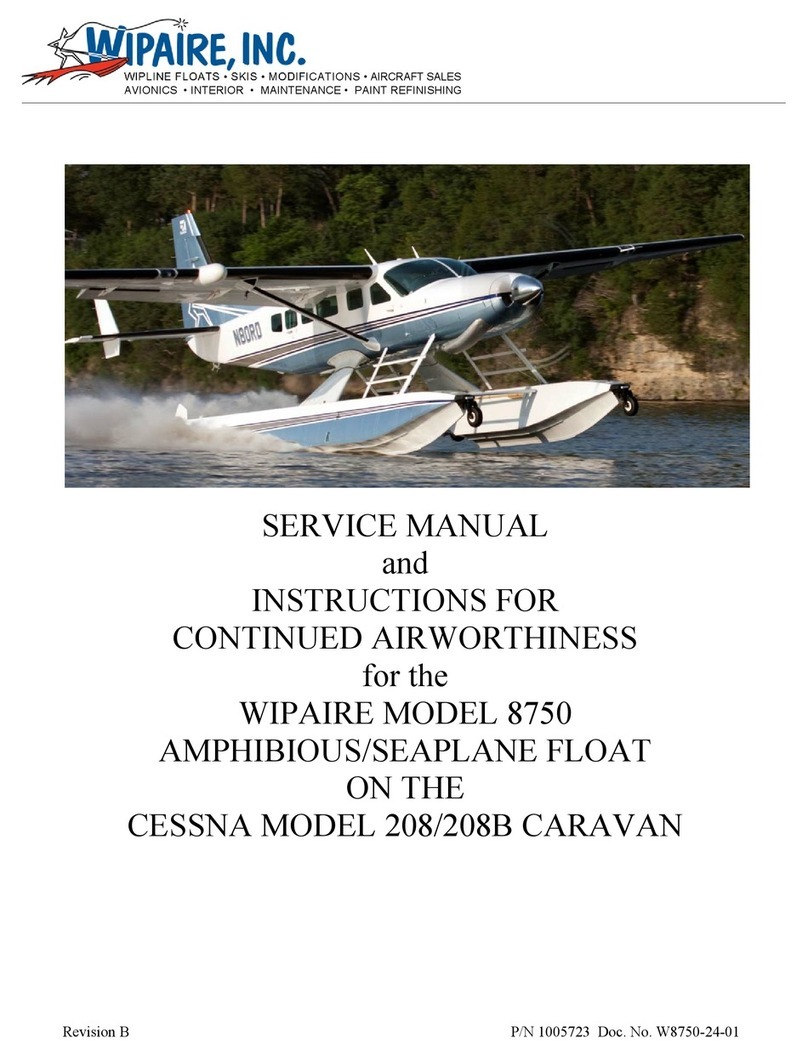
SERVICE MANUAL & ICA
8750 AMPHIBIAN/SEAPLANE FLOATS ON CESSNA 208/208B
Doc. No. W8750-24-01 P/N 1005723 Revision L Page 3
Rev Pages Description Date
IR All Initial Release 7/3/2012
A All Add green grease as an approved grease. 4/18/2013
B All Added 208B eligibility, updated Hydraulic powerpack image. 6/28/2013
C All
Updated Fig 1-8 for new oleo, updated photo p. 25, changes to MLG rigging
procedure, update to inspection procedures, dened water rudder rigging
procedures, remaining pages repaginated, removed p. 107.
5/30/2014
D All
Added Shear Torque chart, PR 1440 C Sealant, Tef-Gel and full contact
info. Removed Warranty Claim Form. Corrected 1200 was 1000, 1400 was
1150 and 1900 was 1300.
5/26/2015
E All Added Dow Corning DC4 and Mobil Aviation Grease SHC 100 to approved
product list. 7/9/2015
F All Added instruction for main gear oil bath system. 9/22/2016
G11 Added reference for Structural Repair Manual part number 1008274 in
introduction. 5/21/2019
H82, 87-
89, 91
Added instructions to oat re-install checklist, changed pylon attachment
inspection intervals, updated oat removal checklist. 8/5/2019
J 84 Added note for Main Landing Gear Axle Shaft in Maintenance Inspection
Checklist. 9/5/2019
K All
Created manual in new software and changed formatting. Added
instructions for Oleo Strut and Tire Servicing. Removed instructions about
annual inspection under Main Gear Oleos in checklist. Added PR 1422 to
approved Float Sealant. Updated Corrosion Limits chart to add extrusions.
Removed Inspector sign o column in maintenance checklist and oat
removal and re-install checklist.
1/9/2020
L
32-33,
35, 37,
67-68,
70, 73-
74
Added note about STA-Lube. Added information for Oil Bath Wheels.
Updated Figure 4-3. Updated title for Figure 4-2A. Added Figure 4-2B.
Added STA-Lube to Brake Caliper Grease. Added information about
corrosion limits. Removed Figure 9.1. Updated details in Maintenance
Checklist for spreader bars and y wires. Added Emergency Gear
Retractions/Extension steps to Maintenance Checklist due to previous
removal. Added Greased Wheel Only procedure in Maintenance Checklist.
Replaced inspector sign o column in oat removal and re-install checklist.
8/3/2020
View most current revision of this ICA at www.wipaire.com.
